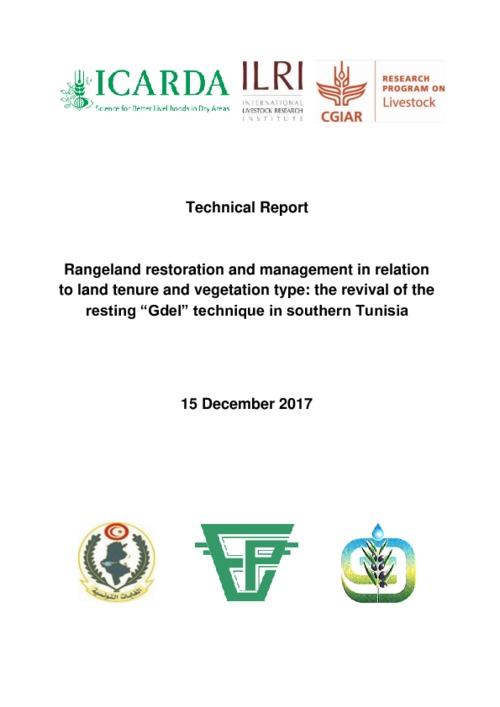Resource information
Even if preliminary results have shown that a protection period of 3 years is not sufficient for disappeared species to appear nor for succession to reach a next stage, mainly in the degraded Stipa tenacissima community, the reintroduction of the rest “gdal” practice seems to be beneficial and a suitable tool to manage sustainably the arid rangelands under changing climate. Thus, the evidence suggests that, during short-term rest from grazing (2 years), vegetation cover, density, rangeland production and carrying capacity can be improved. During relatively rainy years, grazing for short period (1 year or less) is apparently not harmful for rangeland vegetation in the dry areas. In this context, if rangelands are grazed by a number of animals lower than the carrying capacity, there will be no risk of rangeland degradation and vice versa. Adequate grazing can have a beneficial effect over the duration of the vegetative period of certain species and alternation of short periods of grazing with periods of vegetative rest is generally more favourable than strict or long term protection. These results are still preliminary and need to be confirmed by further monitoring and assesment of the vegetation growth and production in relation to the different tested grazing management techniques.
The preliminary results have shown that a protection period of 3 years is not sufficient for disappeared species to appear nor for succession to reach a next stage, mainly in the degraded Stipa tenacissima community, the reintroduction of the rest “gdal” practice seems to be beneficial and a suitable tool to manage sustainably the arid rangelands under changing climate. Thus, the evidence suggests that, during short-term rest from grazing (2 years), vegetation cover, density, rangeland production and carrying capacity can be improved. During relatively rainy years, grazing for short period (1 year or less) is apparently not harmful for rangeland vegetation in the dry areas. In this context, if rangelands are grazed by a number of animals lower than the carrying capacity, there will be no risk of rangeland degradation and vice versa. Adequate grazing can have a beneficial effect over the duration of the vegetative period of certain species and alternation of short periods of grazing with periods of vegetative rest is generally more favourable than strict or long term protection.


